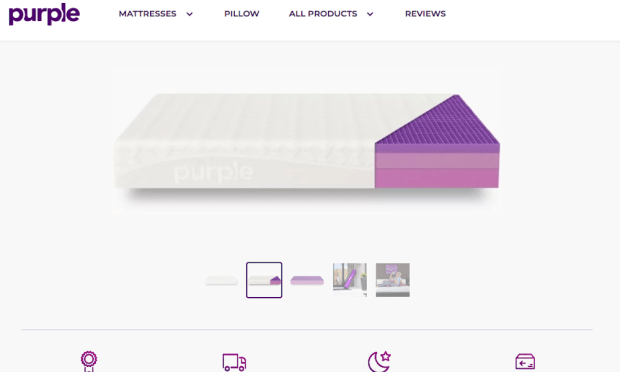Purple Mattress’s Path Through The Crowded Direct-To-Consumer Mattress Market

The mattress market in the United States has become a shocking competitive place. Once dominated by a sales model largely dependent on consumer confusion and complex sales calendars has in the last few years become a race between various direct-to-consumer mattress shops that have disrupted the old model.
Instead of traveling to a specialty mattress store and navigating a variety of sales pitches for a plethora of mattress models and types, consumers can turn to the Caspers, Yogabeds, Leesa and Tuft & Needles of the world that have streamlined the process with a single model per basic bed size and everyday pricing that remains consistent.
The pack leader among the emerging competitors as 2018 draws to a close is probably Casper, which has partnered with Target for in-store space (after nearly being acquired by the big box retailer for $1 billion) and is planning open 200 stand-alone stores, adding to the one it has already opened for business.
“We consider ourselves a tech company first. We’ve created software that lets us know exactly where our raw materials and mattress components are and how to forecast what and when to build,” Co-Founder and COO Neil Parikh told PYMNTS earlier this year.
But the competition remains very tight: West Elm and Pottery Barn have partnered up with Leesa Sleep, and Tuft & Needle merged with Serta Simmons Bedding, the largest traditional mattress manufacturer in the U.S. representing about 40 percent of the mattress market.
It is a crowded and competitive field, and new Purple Mattress CEO Joseph Megibow is now tasked with helping Purple sells its “science of sleep” message to consumers increasingly courted on all sides by mattress makers. Megibow previously served as senior vice president and chief digital officer at American Eagle Outfitters.
Megibow comes into the helm of a firm that claims it is profitable. Purple put up $190 million in net revenue last year — a strong showing for a firm that first crept onto the market less than three years ago. Like its competitors, Purple sells mostly online and offers consumers long multi-night mattress test drives to decide if the product is right for them. If not, Purple promise to take the mattress back, no questions asked.
However, also like its contemporaries in the mattress-in-a-box space, Purple Mattress is looking to expand its real world presence with brick-and-mortar partnerships. In June, Purple added 16 new stores to expand its partnership with Mattress Firm. That tie-up began last year when Mattress Firm began selling Purple mattresses in Sacramento, California; Austin, Texas; and Washington, D.C.
Purple has a very active business on Amazon.com as well — or at least it had one. It remains to be seen what the fate of that will be in light of Amazon’s recent announced that it is entering the direct-to-consumer (DTC) mattress market with its own offering: a 12-, 10- or 8-inch AmazonBasics memory foam mattress.
That may be good news for Amazon — and perhaps customers in the market for a new mattress — but it is also a fairly loud shot across the bows of its competitors. Amazon’s mattress comes in at a much lower price than its competitors’ mattresses. A queen-sized mattress will cost Amazon customers around $260 — a comparable mattress on Casper, Tuft & Needle or Purple will run between $600 and $1,000.
The lower price point isn’t necessarily a death knell for Purple or any of its many competitors, but it certainly adds more pressure to a field that was already crowded and a bit of a pressure cooker.
Purple, particularly in the form of its new CEO, remains confident that its unique offering will stand up to the strain.
“I am extremely excited to join Purple at such an important time in its development,” Megibow said. “As the benefits of healthy sleep have become more understood, Purple is well-positioned as a disrupter in the health and wellness industry.”
And as a profitable firm with a list of loyal devotees, that is in some sense true. But, of course, the mattress space is competitive, and Purple doesn’t have the exposure Casper does, or the reach Amazon brings to the field. Whatever else Purple does in 2019, it seems it will have to raise its public profile first and foremost, lest it risk fading into the background of a crowded picture.
